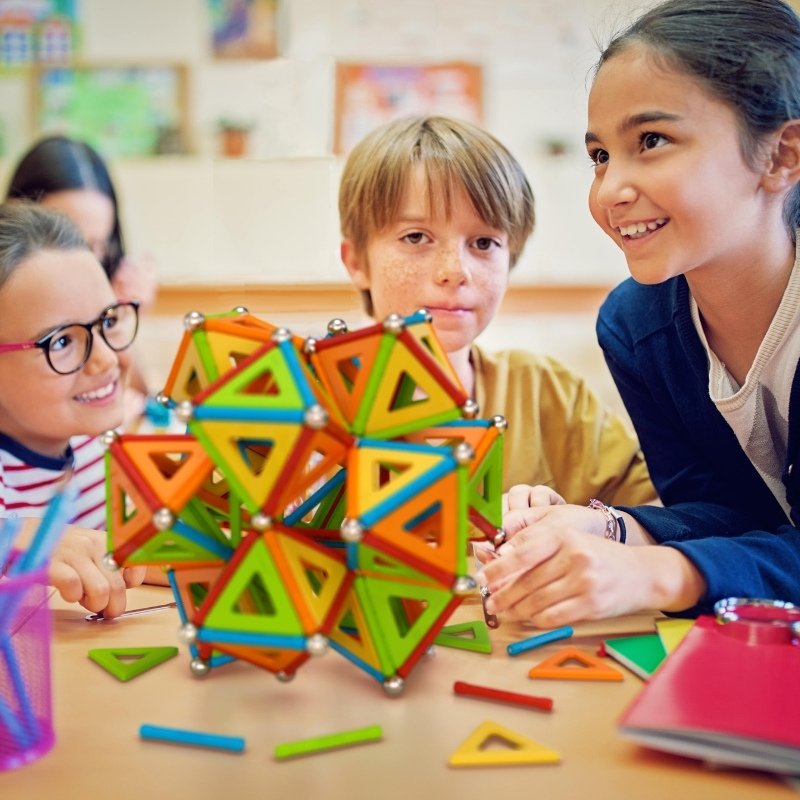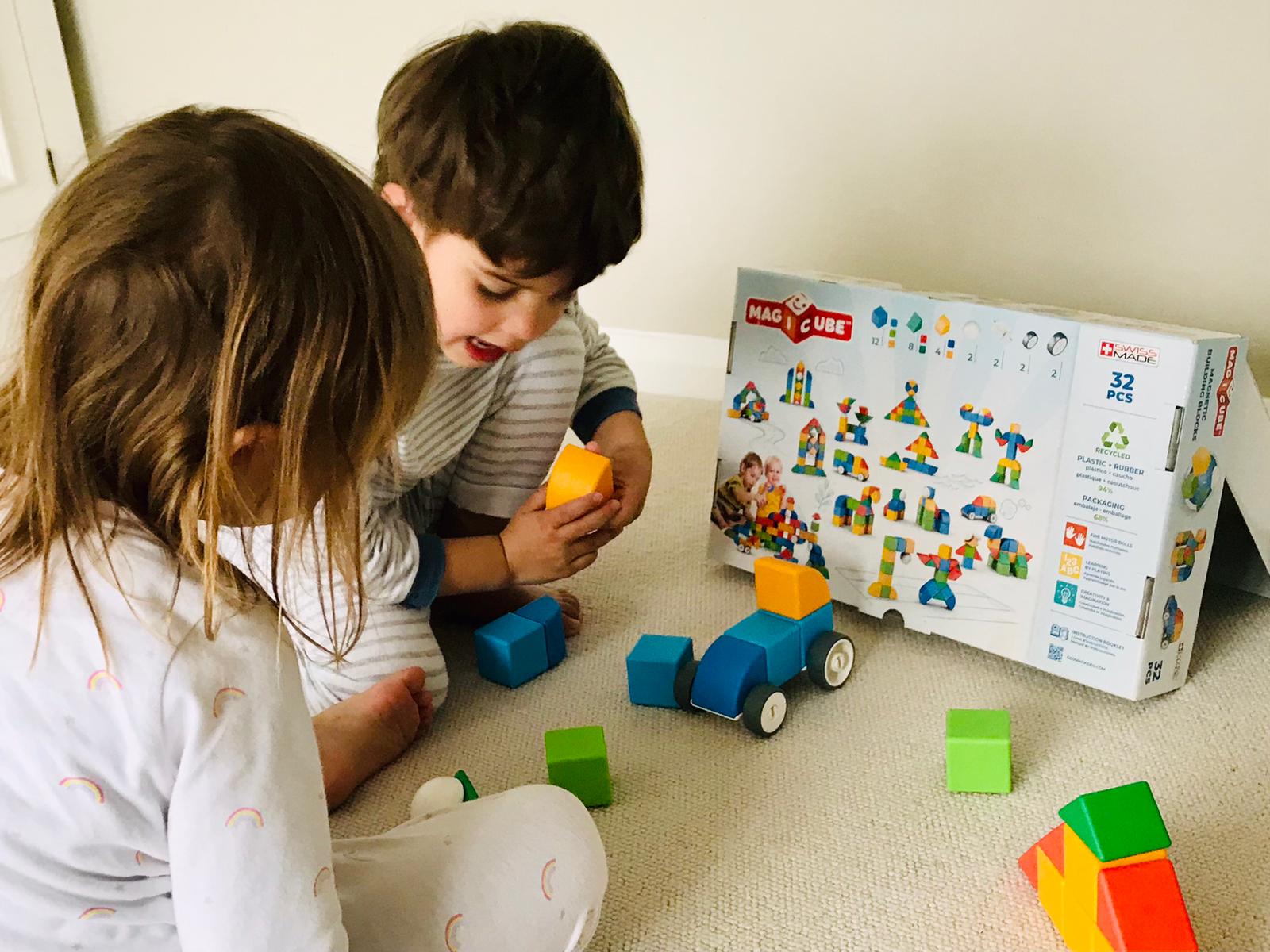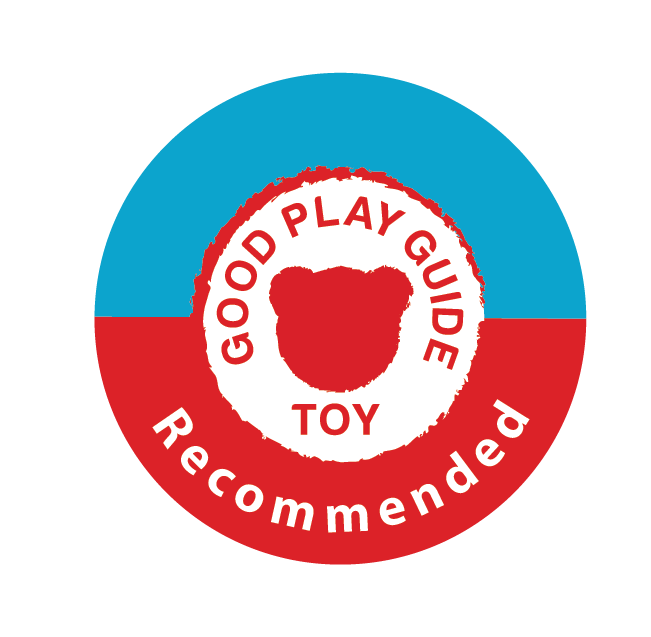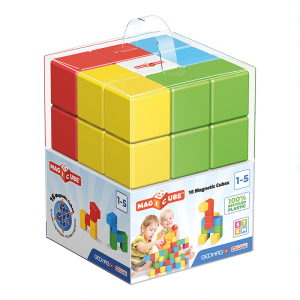
How to encourage learning through open-ended construction play

One of the best ways that children learn is through play, particularly the open-ended kind that allows them to be creative and interact in different ways.
Your child may pick up a simple looking set of blocks or shapes, and their imagination fills in the gaps to make them something exciting!
Playing with open-ended construction sets can also offer more longevity to your child’s play because they can build something completely different from one day to the next.
As their skills grow, they are able to build and explore in new ways, meaning simple and engaging construction toys can be a good investment for helping your child to develop through play.
This longevity can be enhanced by making sure you invest in toys that are high-quality and made sustainably.
Construction sets such as Geomag Panels and Geomag Magicube that are made out of recycled plastics are long-lasting and durable, doing their bit to reduce waste and use eco-friendly manufacturing methods.
Where do construction toys fit into my child’s development?
While they are building something, children’s brains are constantly being stimulated, whether that is through the physical parts of building (e.g. hand-eye coordination and balance), the planning (e.g. creativity and spatial awareness), or the fixing (e.g. problem-solving and logical thinking).

Here are the best ways to engage your child in learning through construction play at different ages and stages:
18-36 MONTH OLDS
From 18 months, little ones are able to branch out into playing with more varied toys like building blocks and puzzles as a result of their developing hand-eye coordination. With this coordination comes the ability to place and balance certain objects, such as building a simple tower of blocks.
Magicube Full Color blocks are great for encouraging these more coordinated movements as they are easy for small hands to grab and stack and they also stick together, to provide extra stability for their creations.
Little ones are naturally inquisitive and allowing them to express their curiosity in their construction play at this age is key for helping them to further their logical understanding.
For example, you may find at this age that they enjoy knocking a tower down just as much (if not more!) than building it. This is because they are refining their understanding of cause and effect, which is where they begin to make sense of the consequences of their actions.
3-5 YEAR OLDS
A great way to get children engaged in construction play is to combine it with their imaginative play, which at this age is what your child will be most interested in.
Construction sets that feature shapes, as well as the traditional blocks, allow children more creative freedom. For example, with Magicube Shapes, little ones can build a variety of different creations such as cars, houses, or even animals!
Without even realising it, they are developing key skills in problem-solving and logical thinking as they creatively construct the scene for their small-world play. Creative problem solving is a valuable skill to learn as it is what allows us to come up with different approaches to achieve success.
The big shapes are great for younger children as they are easy to hold and fit together, ideal for improving their dexterity and coordination to progress to manipulating more detailed objects.
Creative construction play can also be a great way to encourage children to narrate along with their building as they get older. You may see them start using words such as “front” or “back”, which shows that they are developing a visual awareness of the dimensions of different objects.

5-7 YEAR OLDS
As children get slightly older, the improved dexterity in their hands and fingers allows them to manipulate smaller objects and experiment with more complex construction toys.
Their construction knowledge also starts to benefit their STEM skills, as they use predictive thinking and experimentation in their play, for example, “this won’t support the structure…but I could try this instead”. This is an important part of their learning as it allows them to make a prediction and then experiment to see if it is true.
Geomag Supercolor Panels allow children to explore concepts such as magnetism and polarity as they experiment with the shapes, magnetic spheres, and rods. This progresses their understanding in a practical way as they can see for themselves what happens e.g. when they try to stick together repelling ends of the rods.
In KS1, your child will also be familiar with different 2D shapes and be able to describe their properties in mathematical language. Playing with toys featuring different 2D and 3D shapes helps to develop their visual thinking skills as they start to be able to mentally visualise and rotate objects, to work out and describe their features.

Conclusion
With open-ended construction play, we can find a balance between offering children a creative and engaging activity and supporting their learning. This is because it offers a versatile base for them to develop their coordination, visual thinking and creative problem-solving.
Use this guide to help best choose sustainable sets that are able to grow with your child as they develop, offering them longevity in their play and the learning benefits they receive.

Featured Good Toys in this Article...
-
Magicube Full Color – 100% recycled (8 / 16 Cubes)
£18.00 – £35.00







